#virtopsy
Text
DP X DC prompt: ~It's April 27~
Happy Death Day, Jason! or
How to Get a Medical Certificate of Death for employment.
~~~~~
Jason: Replacement,where’s my death certificate? In Infinite Realms they require it when applying for a job.
Tim: We..We burned it.
Jason: What the hell?!
Tim: Well, you broke your tombstone and it hurts to think about..so, you know, we thought you wouldn’t be happy to see it.
Jason: And what do you offer me now? I will not lie down again on the autopsy!
Tim: Well, actually..
~~~~~
Jason: Hey, Bruce, did you know that your close relatives might refuse traditional autopsy? *condemningly pointing to his autopsy scar*
Dick: It’s only possible if death was nonviolent, Little Wing. We’re sorry.
Jason: I don’t care! Call whoever you want but I need directions to virtopsia in an hour.
~~Meanwhile, Fenton Works~~
People may ignore the similarities between Fenton and Phantom but what about instrumental diagnostics?

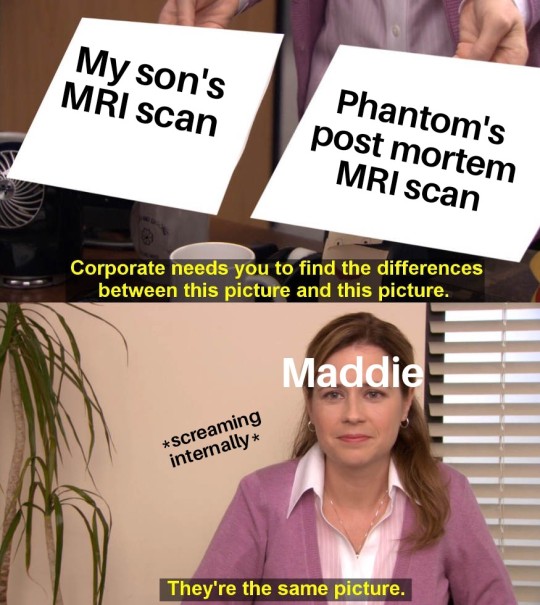
~~In an hour, near the morgue~~
Danny: Where are my forensic results?
Doctor: Mr Fenton, your C.T.’s not ready yet, so wait outside.
Danny: I’m already dead! Should be afraid of too much ionization? All my molecules already got all rearranged.
Jason: Hey! It's my turn!
Danny: Sorry. the Ancients send me second time for expertise, damn bureaucrats.
Jason: Are you getting a job too?
Danny: Not by choice but by fate, unfortunately. What position are you applying for?
Jason: Royal Knight.
Danny: Ambitious. But you don’t look like a guy in armor or with a sword.
Jason: Kid, my guns will replace any weapon. Ask anyone in Crime Alley. What about you?
Danny: Well, take that piece of paper and don’t bring me your resume, you’re hired. Let me introduse myself. New King, Phantom. Don’t be late, work day starts at 7 a.m. I like black coffee, no sugar.
Jason: I’m not your secretary, asshole.
Danny: See you later.
~~the next morning.the dining room of Casper High~~
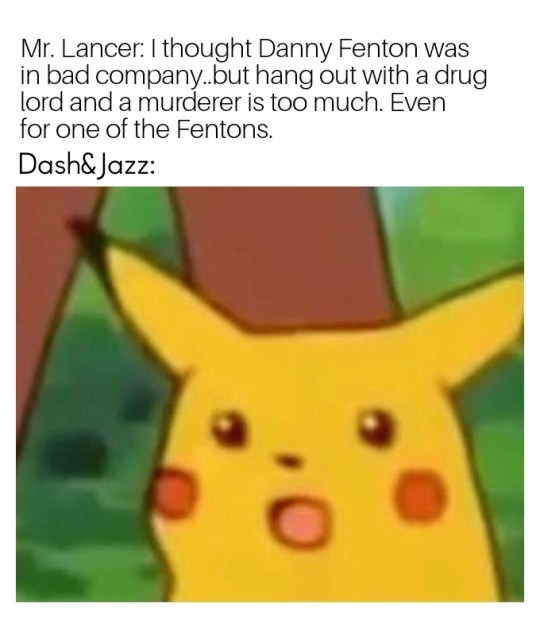
Red Hood: Your coffee, Your Majesty.*smiles*.
Danny: Did you spit in there? *drinks some*, *senses 15 spoons of sugar in 300 milliliters of drink*.
Danny: Ha! Reverse psychology works great. Jazz is right! *drinks it all in one gulp*
Red Hood: M-monster! Disgusting! On a level with Tim, I swear!
Danny: Why is it official? Just call me Danny. And who is Tim?
Jason: ..I’m not letting you people without taste buds meet, ever.
Danny: Too bad, it seems we have a lot in common.
#dp x dc memes#dp x dc crossover#dp x dc prompt#dp x dc#danny phantom au#ghost king danny#ghost king au#mr lancer#Danny Phantom#danny fenton#virtopsy#jack fenton#maddie fenton#halfa jason#jason todd#red hood#fright knight jason#dpxdc
3K notes
·
View notes
Text
दिल्ली AIIMS में ‘Virtual Autopsy’ की शुरूआत, अब नए तरीके से होगा पोस्टमार्टम
दिल्ली AIIMS में ‘Virtual Autopsy’ की शुरूआत, अब नए तरीके से होगा पोस्टमार्टम
अगलीखबर
Central Government की आपत्ति के बाद Arvind Kejriwal ने बदला योजना का नाम, बोले- काम हमारा, क्रेडिट तुम्हारा
Source link
View On WordPress
0 notes
Photo









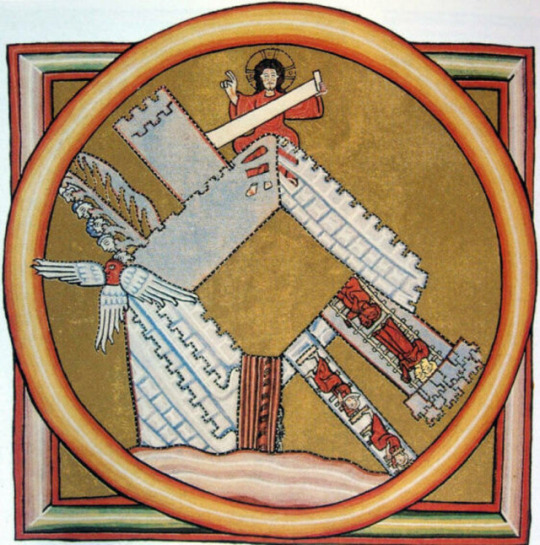
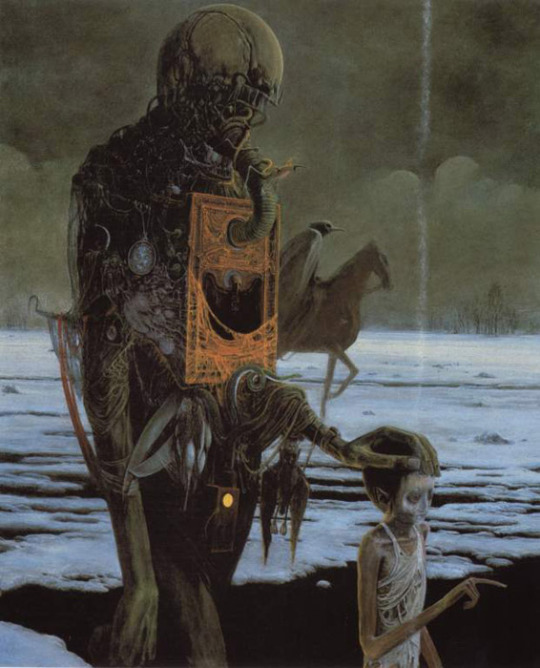
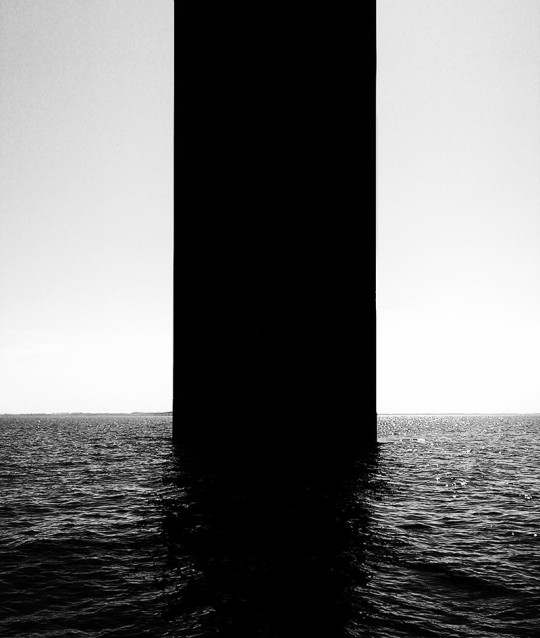


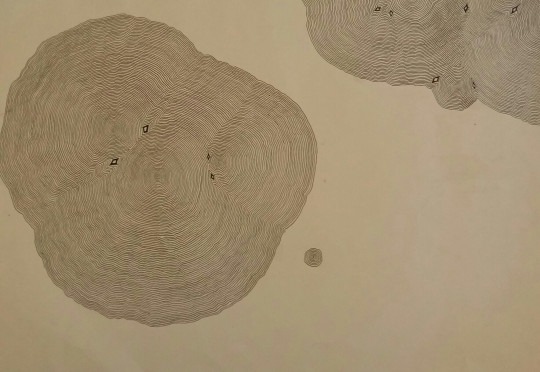
Forced production, day five (addendum): a virtopsy
2 notes
·
View notes
Text
JobMedical donne son avis sur la Virtopsie
Créé en 2007, JOBMEDICAL, est une entreprise de Travail Temporaire, un acteur majeur du recrutement médical et paramédical […]
L’article JobMedical donne son avis sur la Virtopsie est apparu en premier sur Wifiscan : l'actualité du web.
from JobMedical donne son avis sur la Virtopsie
0 notes
Link
Cada día son más los estudios de investigación en los que se destaca el uso de las técnicas de imagen, sobre todo el TAC en la práctica diaria de la Medicina Forense. Desgraciadamente en nuestro entorno (como todos ustedes saben les escribimos desde España) esto en la actualidad podríamos considerarlo una utopía. Sin embargo no perdemos la esperanza de alcanzarlo y mientras tatno nos gusta estar informados de las novedades en este campo.
Post-mortem CT use for dental identification
Every day more and more research studies highlight the use of imaging techniques, especially CT in the daily practice of Forensic Medicine. Unfortunately in our environment (as all of you know we write from Spain) this could currently be considered a utopia. Nevertheless we do not lose the hope to reach it and while tatno we like to be informed of the innovations in this field.
Desde hace años les venimos hablando del uso de las técnicas por imagen como apoyo al diagnóstico médico forense tras la muerte. En concreto hemos hablado del uso de la TAC o la RMN para casos de muerte súbita, ahorcaduras, sumersión, incluso para la determinación de la data de la muerte o para el diagnóstico postmorten de la muerte súbita infantil. Incluso hemos llegado a plantearnos si en realidad la virtopsia es un mito o una realidad. En la mayoría de las ocasiones hemos concluido que las técnicas de imagen de por sí no sirven para alcanzar un pleno diagnóstico, si bien se han demostrado útiles en múltiples estudios como apoyo a la autopsia tradicional.
For years we have been talking about the use of imaging techniques to support forensic medical diagnosis after death. Specifically, we have talked about the use of CT or MRI in cases of sudden death, hangings, drowning, even for determining the date of death or for the postmortem diagnosis of sudden infant death. We have even wondered whether virtopsy is actually a myth or a reality. Most of the time we have concluded that imaging techniques alone are not useful for achieving a full diagnosis, although they have proven useful in multiple studies in support of traditional autopsy.
Hoy traemos a nuestro blog un artículo publicado recientemente por investigadores daneses (de la Universidad de Copenhague) que entre los años 2011 y 2012 han practicado TAC a cadáveres en las que han procedido a realizar reconstrucciones en 3D de las arcadas dentales para utilizarlas como modelos para comparar con las imágenes ante-morten de los posibles fallecidos y así llegar a una identificación cierta. El artículo titulado «Post-mortem computed tomography as part of dental identification – a proposed guideline» trata de poner de manifiesto la necesidad de originar y asentar una serie de protocolos para la realización de estas técnicas, mediante los ajustes de contrastes y brillos, creando diagramas dentales que le sean útiles a los odontólogos forenses en sus tareas de comparación e identificación.
Today we bring to our blog an article recently published by Danish researchers (from the University of Copenhagen) who between 2011 and 2012 have performed CT scans of corpses in which they have proceeded to perform 3D reconstructions of dental arches to use them as models to compare with ante-morten images of possible deaths and thus arrive at a certain identification. The article entitled «Post-mortem computed tomography as part of dental identification – a proposed guideline» aims to highlight the need to originate and establish a series of protocols for the implementation of these techniques, by adjusting contrasts and brightness, creating dental diagrams that are useful to forensic dentists in their tasks of comparison and identification.
Estos investigadores aseguran en el artículo que en cuatro simples pasos se pueden conseguir imágenes realmente útiles para alcanzar una identificación completa. Además estas reconstrucciones en 3D se pueden almacenar y por lo tanto pueden ser utilizadas como prueba pericial para posteriormente ser expuestas en los juicios, si fuera necesario o pueden ser utilizadas en posteriores investigaciones como fuente de comparación. Si bien ellos mismos indican en su artículo que tan solo han estudiado 15 casos y que por tanto dada la escasa casuística sería necesario continuar con las investigaciones y ampliar el número de casuística para poder garantizar que las conclusiones alcanzadas pueden generalizarse y utilizarse por el resto de la comunidad científica.
These researchers assure in the article that in four simple steps they can get really useful images to achieve a complete identification. In addition, these 3D reconstructions can be stored and therefore can be used as expert evidence to be subsequently exposed in the trials, if necessary or can be used in further investigations as a source of comparison. Although they themselves indicate in their article that they have only studied 15 cases and that therefore, given the scarcity of cases, it would be necessary to continue with the investigations and expand the number of cases in order to guarantee that the conclusions reached can be generalized and used by the rest of the scientific community.
As we can see, today we present a new utility of radiological techniques in the study of post-mortem cases. Research is undoubtedly progressing and we should demand that public administrations do not restrict our research capabilities and provide us with the necessary means to climb on the bandwagon of new technologies. This is how a people moves forward, not just with words. We will continue alert.
Como vemos, hoy les presentamos una nueva utilidad de las técnicas radiológicas en el estudio de los casos post-mortem. Indudablemente las investigaciones avanzan y nosotros deberíamos exigir a las administraciones públicas que no nos coarten nuestras capacidades de investigación y que nos suministren los medios necesarios para subirnos al carro de las nuevas tecnologías. Así es como avanza un pueblo, no solo con palabras. Seguiremos atentos.
0 notes
Photo

Otopsiye ‘vücut bütünlüğü’ ayarı Bern Üniversitesi Etik Kurulu onayıyla Almanya’da 120 olayda kullanılan ama Türkiye’de henüz faaliyete geçmeyen virtopsi işleminde, özel bir makine aracılığıyla…
0 notes
Text
Klinische Obduktionen in der Schweiz
Zusammenfassung
Hintergrund
In den letzten Jahrzehnten ist weltweit ein stetiger Rückgang der Autopsiezahlen zu verzeichnen. Die Gründe dafür sind vielfältig. Die Gesetzgebung bzgl. Widerspruchs- bzw. Zustimmungsregelung scheint keinen wesentlichen Einfluss auf die Autopsierate zu haben. Vor allem strukturelle Ursachen und die Einstellung der Ärzteschaft sind Gründe für diesen Rückgang. Als Hauptargument für eine hohe Autopsierate wird das Aufzeigen diagnostischer Fehler genannt. Diagnosediskrepanzen sind aber relativ unabhängig von der Rate durchgeführter Autopsien. Am UniversitätsSpital Zürich konnte in einer Studie gezeigt werden, dass von 1972–2002 die Häufigkeit relevanter Diagnosediskrepanzen (Klasse I und II) von 30 auf 7 % zurückging.
Ziel der Arbeit
Ziel der Arbeit ist es, die Notwendigkeit einer stabilen Autopsierate darzustellen und die Situation der Autopsie in der Schweiz zu beleuchten.
Material und Methoden
Dazu wird die Bedeutung der Autopsie in den Bereichen Qualitätssicherung medizinischer Diagnostik, Krebsstatistik, medizinische Forschung sowie Aus‑, Weiter- und Fortbildung von Ärzten in der Schweiz aufgezeigt. Es werden Bemühungen seitens der Pathologen dargestellt, der sinkenden Autopsierate entgegenzuwirken.
Ergebnisse und Diskussion
Sinkende Autopsiezahlen haben einen maßgeblichen Einfluss auf die Krebsstatistik. Die Rate neu entdeckter Tumoren bei Autopsien der Schweiz ist von 42 % in 1980 auf 17 % in 2010 gesunken. Pädiatrische Autopsien sind ein wichtiges Instrument der Qualitätssicherung medizinischer Diagnostik in der Neonatologie und Pädiatrie in der Schweiz, jedoch ist auch hier die Rate durchgeführter Autopsien sinkend. Postmortale MRT-Untersuchungen („virtopsy“) könnten in Zukunft die Akzeptanz der Eltern für eine Autopsie erhöhen. Autopsien leisten einen wichtigen Beitrag in der Forschung z. B. in der Dokumentation therapieassoziierter Nebenwirkungen und sind wichtiger Bestandteil der Aus‑, Weiter- und Fortbildung der kommenden Ärztegenerationen.
from #ORL-Sfakianakis via xlomafota13 on Inoreader http://ift.tt/2eQryZO
from OtoRhinoLaryngology - Alexandros G. Sfakianakis via Alexandros G.Sfakianakis on Inoreader http://ift.tt/2tGc4tL
0 notes
Video
vine
Research project #Virtopsy designs virtual worlds for investigators to enter while researching #crime scenes: bbc.in/3dcrime #3D #OculusRift
0 notes
Text
Salerno, uomo massacrato di botte e bruciato
Nuovo post pubblicato su http://www.wdonna.it/salerno-uomo-massacrato-di-botte-e-bruciato/47824?utm_source=TR&utm_medium=Tumblr&utm_campaign=47824
Salerno, uomo massacrato di botte e bruciato
Corpo carbonizzato in provincia di Salerno
Il cadavere carbonizzato di un uomo è stato ritrovato nella notte tra martedì e mercoledì in un viottolo di Occiano, frazione del comune di Montecorvino Rovella (Salerno).
La virtopsy, una tac tridimensionale, ha rivelato che l’uomo, di età compresa tra i 40 e i 50 anni, è stato massacrato di botte fino alla morte, per poi essere trasportato nel luogo in cui è stato ritrovato e dato alle fiamme. Aveva mani e piedi legati con cavi elettrici.
L’esame ha individuato numerose fratture al torace e alla base cranica. Non si conoscono ancora le generalità dell’uomo.
Sono in corso le indagini dei carabinieri della Compagnia di Battipaglia: non si esclude il regolamento di conti tra clan della criminalità organizzata.
0 notes
Link
Hace tiempo que no traemos a nuestro blog el tema de las virtopsias. Como hemos visto a lo largo de nuestra trayectoria, es un tema que nos gusta debatir, sobre todo para plantear los pros y los contras con los que nos vamos a encontrar. Hoy nos vamos a centrar en el uso de las técnicas de imagen postmorten en los niños, ¿son útiles? ¿debemos de seguir esta línea?
Postmortem imaging in kids: first experiences
It’s been a while since we brought the subject of virtopsias to our blog. As we have seen throughout our trajectory, it is a topic that we like to debate, especially to raise the pros and cons that we are going to find. Today we are going to focus on the use of postmortem imaging techniques in children, are they useful? Should we follow this research line?
En Agosto, en la revista Pediatric Radiology se ha publicado el artículo «Pediatric postmortem computed tomography: initial experience at a children’s hospital in the United States» y nos ha llamado la atención, porque como hemos dicho anteriormente, en este blog han aparecido más de un artículo dedicado a las virtopsias en adultos (no solo para determinar la causa de la muerte en casos de muerte violenta comoahorcados o sumersión, sino incluso para casos de muerte súbita cardíaca o para la determinación de la data de la muerte), incluso nos hemos planteado acerca de la fiabilidad de estas pruebas complementarias. Y pensábamos que era práctica común extendida a cualquier cadáver, incluido los niños, pero hemos podido comprobar en el artículo arriba referido que se están empezando a investigar estos nuevos procedimientos en algunos hospitales estadounidenses.
In August, the journal Pediatric Radiology published the article «Pediatric postmortem computed tomography: initial experience at a children’s hospital in the United States» and has caught our attention, because as we have said before, more than one article has appeared in this blog dedicated to virtopsias in adults (not only to determine the cause of death in cases of violent death such as hanging or submersion, but even for cases of sudden cardiac death or for the determination of the date of death), we have even wondered about the credibility of these complementary tests. And we thought that it was common practice extended to any corpse, including children, but we have been able to verify in the above-mentioned article that these new procedures are beginning to be investigated in some hospitals in the USA.
Las técnicas de imagen postmortem pediátrica es un campo incipiente de estudio con mucho que aprender, la creación de protocolos de imágenes y la diferenciación de la patología antemortem de los cambios postmortem esperados están provocando un aumento del interés de los profesionales implicados en este tipo de técnicas de imagen. Las autopsias pediátricas son fundamentales porque hay una tasa de entre un 10% y 25% de discrepancia entre el diagnóstico clínico y los hallazgos de la autopsia completa. Hasta el 50% de los certificados médicos para mortinatos pueden ser incorrectos. Las anomalías cardíacas se encuentran hasta en el 35% de las autopsias fetales, de las cuales sólo el 50% se detectan prenatalmente. Los defectos cardíacos no diagnosticados previamente se encuentran en hasta el 10% de los casos de síndrome de muerte súbita del lactante (SMSL). Pero a pesar de todo ello, las autopsias clínicas infantiles han disminuido en EEUU significativamente, entre el 5% y el 30% por múltiples razones, incluyendo el coste de las mismas y la renuncia de los padres a dar su consentimiento. Es por todo esto por lo que los autores han comenzado a realizar TC a los niños para determinar las lesiones postmorten y tratar de explicar la causa de la muerte.
Pediatric postmortem imaging is an incipient field of study with much to learn, the creation of imaging protocols and the differentiation of antemortem pathology from expected postmortem changes are causing increased interest from professionals involved in this type of imaging techniques. Pediatric autopsies are critical because there is a 10% to 25% discrepancy rate between clinical diagnosis and complete autopsy findings. Up to 50% of medical certificates for stillbirths may be incorrect. Heart abnormalities are found in up to 35% of fetal autopsies, of which only 50% are detected prenatally. Previously undiagnosed heart defects are found in up to 10% of SIDS cases. But despite all this, clinical autopsies for children in the USA have decreased significantly, by between 5% and 30% for a variety of reasons, including the cost of autopsies and the relinquishment of parental consent. This is why the authors have begun to perform CT scans on children to determine postmortem lesions and try to explain the cause of death.
Sin embargo los autores indican que el valor de la TC postmortem no está probado. En los adultos, sólo hay un 50% de coincidencia en la causa de muerte entre la imagen postmortem y la autopsia, con un 32% de error grave en la TC postmortem y un 43% de error en la RM postmortem. En los estudios de tomografía computarizada postmortem pediátrica la concordancia entre la tomografía computarizada postmortem y la autopsia, ha sido de entre un 57% y un 83% para todas las categorías de hallazgos. La TC postmortem es superior a la autopsia en la detección de fracturas, y es mejor que la radiografía para las fracturas de costillas; sin embargo, los autores han podido comprobar que la TC es más limitada en el contexto de la muerte natural. Pero cuando no se encuentra ninguna causa de muerte en la autopsia, se ha demostrado que la concordancia con la TC es muy buena.
However, the authors indicate that the value of postmortem CT is not proven. In adults, there is only a 50% coincidence in cause of death between postmortem image and autopsy, with 32% serious error in postmortem CT and 43% error in postmortem MRI. In pediatric postmortem CT studies, the concordance between postmortem CT and autopsy has been between 57% and 83% for all categories of findings. Postmortem CT is superior to autopsy in fracture detection, and is better than radiography for rib fractures; however, the authors have been able to prove that CT is more limited in the context of natural death. But when no cause of death is found in autopsy, agreement with CT has been shown to be very good.
Los riesgos más comunes de equivocarse en el diagnóstico mediante los estudios pediátricos tanto con TC como con RMN son la enfermedad pulmonar, la miocarditis y la sepsis. Un contraste pobre de los tejidos blandos es un factor limitante significativo de la TC postmortem. Se ha demostrado que la RMN postmortem es superior a la TC para la evaluación de los tejidos blandos, en particular el sistema nervioso central, el corazón y los riñones, especialmente en fetos y lactantes. Cuando la TC postmortem se ofrece como opción a las familias en lugar de la autopsia tradicional, es fácil que si den su consentimiento pero es importante que se les expliquen las limitaciones relativas del estudio con respecto tanto al diagnóstico como a la diferenciación de los cambios postmortem de la patología, y que por tanto puede que no sirva de nada la TC y sea imprescindible realizar la autopsia completa.
The most common risks of misdiagnosis by pediatric CT and MRI studies are lung disease, myocarditis, and sepsis. Poor soft tissue contrast is a significant limiting factor for postmortem CT. Postmortem MRI has been shown to be superior to CT for the evaluation of soft tissues, particularly the central nervous system, heart, and kidneys, especially in fetuses and infants. When postmortem CT is offered as an option to families rather than traditional autopsy, it is easy if they give their consent but it is important to explain to them the relative limitations of the study with respect to both the diagnosis and the differentiation of postmortem changes from the pathology, and that therefore CT may be of no use and a complete autopsy is essential.
As we have seen, and as we have defended on other occasions, virtopsy alone is not sufficient to abandon traditional autopsy. The combination of techniques, as always, will be the most complete. However, we will continue to monitor the progression of the studies to see if in certain cases it is possible to replace the traditional method with imaging techniques.
Como vemos, y al igual que hemos defendido en otras ocasiones, la virtopsia por si sola no es suficiente para poder abandonar la autopsia tradicional. La combinación de técnicas, como siempre, va a ser lo más completo. Sin embargo seguiremos atentos a la progresión de los estudios para ver si en determinados casos se puede llevar a cabo la sustitución del método tradicional por técnicas de imagen.
0 notes
Text
Klinische Obduktionen in der Schweiz
Zusammenfassung
Hintergrund
In den letzten Jahrzehnten ist weltweit ein stetiger Rückgang der Autopsiezahlen zu verzeichnen. Die Gründe dafür sind vielfältig. Die Gesetzgebung bzgl. Widerspruchs- bzw. Zustimmungsregelung scheint keinen wesentlichen Einfluss auf die Autopsierate zu haben. Vor allem strukturelle Ursachen und die Einstellung der Ärzteschaft sind Gründe für diesen Rückgang. Als Hauptargument für eine hohe Autopsierate wird das Aufzeigen diagnostischer Fehler genannt. Diagnosediskrepanzen sind aber relativ unabhängig von der Rate durchgeführter Autopsien. Am UniversitätsSpital Zürich konnte in einer Studie gezeigt werden, dass von 1972–2002 die Häufigkeit relevanter Diagnosediskrepanzen (Klasse I und II) von 30 auf 7 % zurückging.
Ziel der Arbeit
Ziel der Arbeit ist es, die Notwendigkeit einer stabilen Autopsierate darzustellen und die Situation der Autopsie in der Schweiz zu beleuchten.
Material und Methoden
Dazu wird die Bedeutung der Autopsie in den Bereichen Qualitätssicherung medizinischer Diagnostik, Krebsstatistik, medizinische Forschung sowie Aus‑, Weiter- und Fortbildung von Ärzten in der Schweiz aufgezeigt. Es werden Bemühungen seitens der Pathologen dargestellt, der sinkenden Autopsierate entgegenzuwirken.
Ergebnisse und Diskussion
Sinkende Autopsiezahlen haben einen maßgeblichen Einfluss auf die Krebsstatistik. Die Rate neu entdeckter Tumoren bei Autopsien der Schweiz ist von 42 % in 1980 auf 17 % in 2010 gesunken. Pädiatrische Autopsien sind ein wichtiges Instrument der Qualitätssicherung medizinischer Diagnostik in der Neonatologie und Pädiatrie in der Schweiz, jedoch ist auch hier die Rate durchgeführter Autopsien sinkend. Postmortale MRT-Untersuchungen („virtopsy“) könnten in Zukunft die Akzeptanz der Eltern für eine Autopsie erhöhen. Autopsien leisten einen wichtigen Beitrag in der Forschung z. B. in der Dokumentation therapieassoziierter Nebenwirkungen und sind wichtiger Bestandteil der Aus‑, Weiter- und Fortbildung der kommenden Ärztegenerationen.
from Anatomy Pathology via xlomafota13 on Inoreader http://ift.tt/2eQryZO
from OtoRhinoLaryngology - Alexandros G. Sfakianakis via Alexandros G.Sfakianakis on Inoreader http://ift.tt/2v2bsCD
0 notes
Photo

Murderers beware: 'virtual autopsies' could revolutionise investigations
Stand aside Dr Quincy, you may no longer be required: the inventor of a state-of-the-art computer-assisted autopsy system that is increasingly being used in European hospitals has claimed the technique could eventually mean there is no such thing as a "perfect murder".
The method, called "Virtopsy", is now being used at selected forensic medical institutes in Europe, having been pioneered by a group of scientists at the University of Zurich. Instead of reaching for the scalpel and making the Y-shaped incision in the chest with which a tradition autopsy begins, pathologists are now able to examine the corpse in 3-D via computer screens.
Michael Thali, the director of Zurich's Institute for Forensic Medicine in Europe and one of the inventors of Virtopsy, said it had the potential to revolutionise criminal investigations. "Basically there will be no such thing as the perfect murder any more as a virtual autopsy allows you to find every piece of evidence," he said.
Read more here.
15 notes
·
View notes